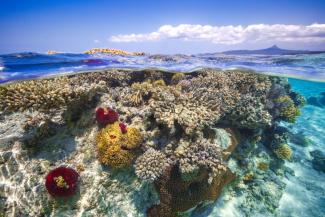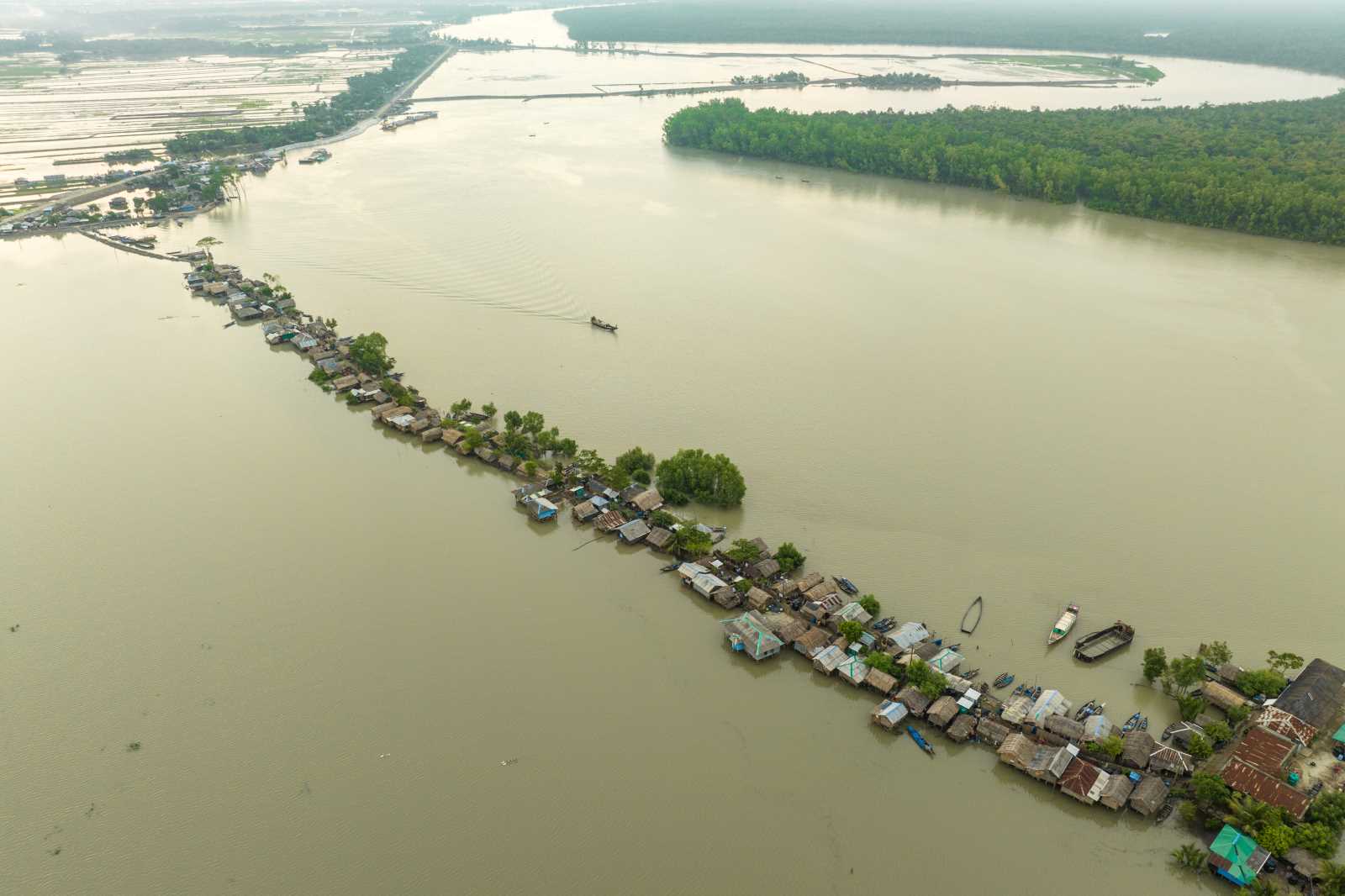Adapting to climate change
Valuable protection

Mangroves and coral reefs reduce erosion and soften the coastal impacts of extreme weather. This matters because climate change is making extreme weather more likely and many coasts are densely populated.
To what extent mangroves serve as shield against forceful waves and winds depends on several issues, including the depth of the water and the density of the vegetation. Mangroves may actually withstand the force of tsunamis. Coral reefs have a similar effect as low-crested breakwaters. They have a protective function, for example, when cyclones cause waves to rise very high.
In 2010, the World Bank launched a global partnership called WAVE (Wealth Accounting and Valuation of Ecosystems Services). The idea was to ensure that natural capital is considered in development planning and is factored into national economic accounting. Many national statistical offices are aware of mangroves attracting tourists, but they tend to neglect services provided by ecosystems in regard to things such as coastal protection, fisheries enhancement and carbon storage.
In regard to coastal protection, there are several ways to assess the economic value of ecosystem services. The WAVE experts endorse an approach called “Expected Damage Function”, which insurance companies often apply too. This method takes account of every potential risk. It enables experts to compare the damages that accrue with and without a healthy natural habitat und the difference indicates what the ecosystem service is worth. According to the WAVE publication, this method makes more sense than the “Replacement Cost” approach, which is about estimating the value of mangroves and reefs by assessing the costs of building artificial infrastructure.
The WAVE authors argue that the better the benefits of ecosystem services are understood, the better those systems tend to be protected. Their publication offers the evidence of 20 case studies. They show that green infrastructure thrives where the local people are aware of the matter and raise political demands accordingly. Scientific evidence can be another trigger to protect eco systems.
The authors recommend several things:
- Mangroves and coral reefs must no longer be considered unconventional coastal protection. Their usefulness has been thoroughly researched.
- Data gaps concerning the coastal protection relevance of mangroves and reefs should be closed.
- Pilot studies would help to incorporate coastal protection services into national economic accounting.
- In many places, the cheapest option for coastal protection is to protect and nurture ecosystems.
- Where such systems have been damaged, restauration should be considered.
- Guidelines for protecting mangroves and reefs would be helpful, and so would international commitments to the cause.
- Developing countries should consider mangroves and reefs when drafting climate-adaptation plans, and donor governments should provide funds for related measures.
Linda Engels
Link
WAVE, 2016: Managing coasts with natural solutions.
https://www.wavespartnership.org/en/knowledge-center/managing-coasts-natural-solutions












